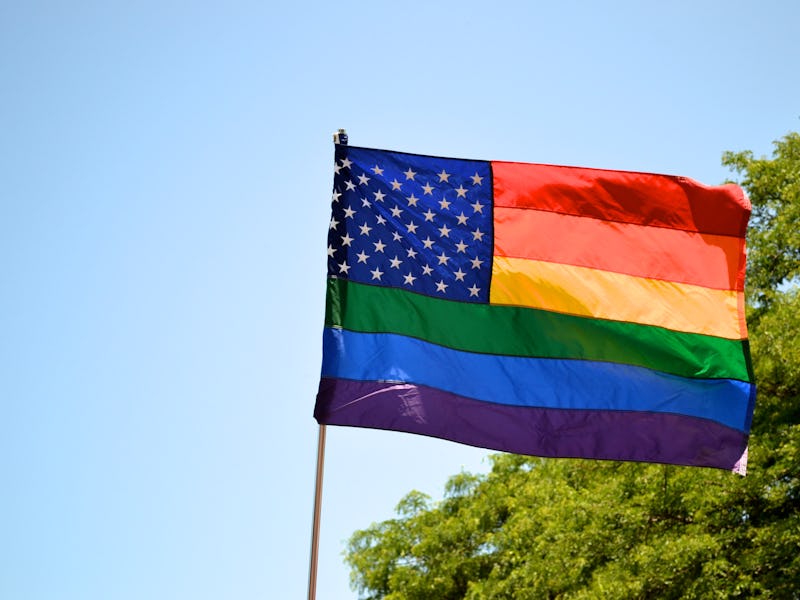New York Finally Trashes the Totally Unscientific 'Gay Panic' Defense
Now, just 47 states to go.

New York State took a major step toward reducing discrimination in its legal system when Governor Andrew Cuomo made moves to ban the “gay panic” defense on Monday. In courtrooms, heterosexual defendants who use gay panic as a defense argue that an inherent fear of a person’s sexual orientation can be blamed for a violent reaction. Psychologists invalidated this idea a long time ago, but somehow this defense is currently allowable in all states except for Illinois and California.
As AP reported on Monday, Cuomo will ban all “New York state agencies and authorities from conducting business with companies that tolerate or promote discrimination” and will support legislation banning the use of a gay panic defense. On Twitter, Cuomo said his actions are his response to the Trump administration’s attacks on civil rights, especially those protecting the LGBTQ community. Politics and morality aside, Cuomo’s support of the defense just makes scientific sense. As psychologists have made clear, the gay panic defense is simply not supported by any scientific evidence.
According to a resolution released by the American Bar Association (ABA) in 2013, which called for states to ban the defense, defendants who use the gay panic defense don’t use it as a defense per se; rather, it’s a strategy to establish traditional criminal defenses, including insanity and diminished capacity, provocation leading to heat of passion, and self defense.
The only reason this was ever considered valid in the past is because, in the early 1920s, gay panic was believed to be a psychological disorder brought on by a person’s internal struggle with homophobia. This led to “homosexual panic disorder” being validated, briefly, by its entry by the American Psychological Association in the Diagnostic and Statistical Manual of Mental Disorders in 1952, but it was stripped of recognition in 1973, which is also when homosexuality was removed from the DSM.
Claiming to have an inherent psychological fear of homosexuality has been shown to have no medical basis, the writers of the ABA document argue, so the defense is simply not valid:
The defense has no medical or psychological basis. Under the insanity or diminished capacity frameworks, the gay panic defense relies on the medical and psychological validity of homosexual panic disorder.
The scientific literature overwhelmingly supports this statement. In 2016, for example, clinical psychologists argued in the Journal of Forensic Psychology Practice that “the conceptualization has little merit based upon its psychological roots.” The use of this defense, they explain, often rests on the defendant’s insistence that they are provoked by a gay person, and, fearing the potential for rape, lose the ability to discern right from wrong. This argument is invalid, they write, because “the strategy appears to rely primarily upon antigay stereotypes.”
Despite the scientific research showing that attacks on LGBTQ people are motivated by cultural bias and not inherent psychological issues, the gay panic defense still persists in 48 states. But that should come as no surprise: Like many divisive problems in the United States, the survival of the gay panic defense is an issue of identity and ideology, not science. This was made clear in a 2016 article in Psychology, Public Policy, and Law, where researchers showed that jurors that identified as conservative in a mock court case were “significantly less punitive when the defendant claimed to have acted out of gay panic as compared to when this element was not part of the defense” — that is, their judgement against violent actions softened when they knew those actions were aimed at a gay person.
It is not invoked often, but when it is, the gay panic defense purchases lighter sentences for individuals who commit acts of violence because of their bias against people of certain sexual orientations — actions that can only be called by one name: hate crimes.